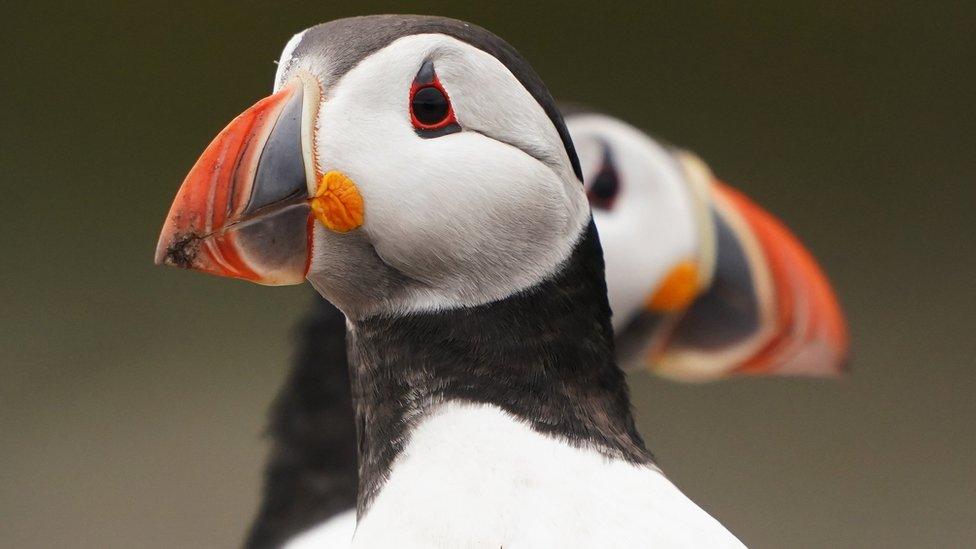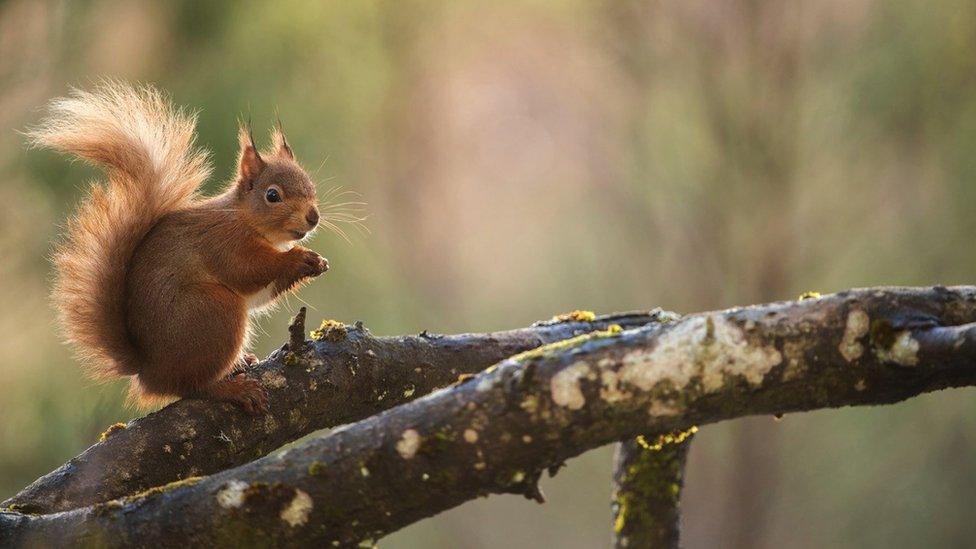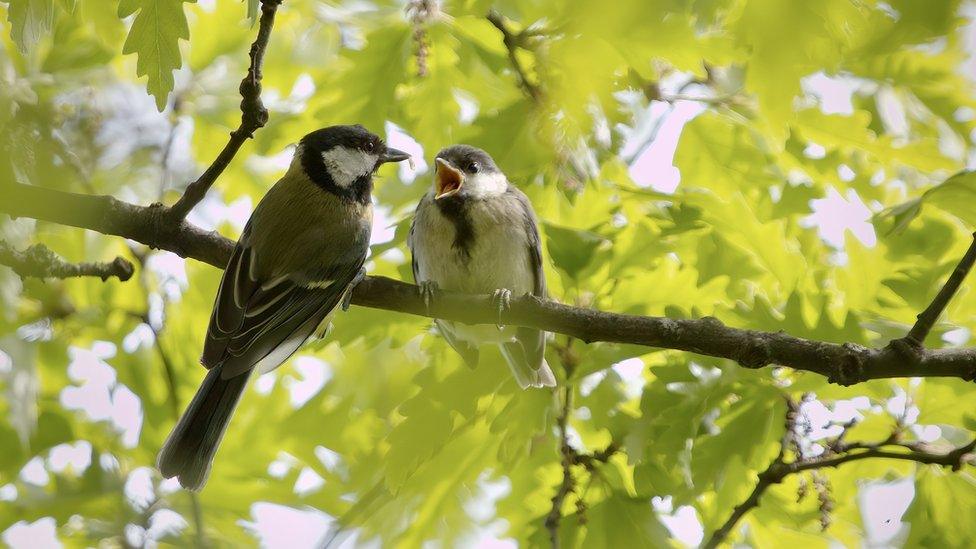Nature and environment in decline across Northern Ireland - report
- Published

Northern Ireland is now one of the most nature-depleted areas in the world.
That's according to the 2023 State of Nature report, which found that 12% of species assessed across NI are under threat of extinction.
The report found that the abundance of farmland bird species has on average fallen by 43% since 1996.
It also found a 14% decrease in the number of flowering plants in Northern Ireland since 1970.
Among the species identified as being at risk of extinction are the basking shark, the European eel, the large heath butterfly, the Irish damselfly, and the Atlantic salmon, all native to the island of Ireland and it's surrounding waters.
The report comes after blooms of blue-green algae have appeared in NI waters over recent months, posing a threat to wildlife and other animals.
Lough Neagh, the biggest freshwater lake in the UK and Ireland, has been particularly affected.
The State of Nature Reports are produced by more than 60 organisations, including wildlife conservation groups, government agencies and academics.
The national report shows that numbers of the UK's animals and plants are falling, as a countrywide nature-loss crisis continues.
The government has said it is committed to "increasing the amount of habitat for nature to thrive".
This year a separate report has been published focused solely on Northern Ireland for the first time since 2016.
Gillian Gilbert, RSPB NI's principal conservation scientist and lead author of the local report, said it "highlights just how much nature in Northern Ireland needs more help".
"Despite ongoing efforts from nature-friendly farmers, wildlife charities and all the individuals who are passionate about doing their part for nature, we are still not tackling this crisis at the scale needed," she said.
The report identifies the way land is managed for agriculture as well as the ongoing effects of climate change as having the the biggest impacts on our wildlife on land and in our waterways.
About 76% of land in Northern Ireland is currently being used for agriculture.
At sea, and around the coast, the main pressures on nature are climate change, marine development and unsustainable fishing, the report states.

The basking shark is among those species identified as being under threat of extinction
John Martin from the RSPB said the report shows "things are continuing to go the wrong way".
"The most frustrating thing about that is that we know what we need to do to turn those species numbers around," he said.
Mr Martin pointed to projects run between conservation organisations and farmers as offering hope for a solution.
He cited the example of a breeding programme for curlews taking place in Glenwherry in County Antrim.
"We need to scale that up - we need to see those actions across where they are needed most," Mr Martin said.
Dairy farmer Tim Morrow acknowledged that his actions had "probably" contributed to the decline in species described in the report.
"All farmers that I know love where they live and they want to look after the land," said Mr Morrow.
"But we've been encouraged to farm in a particular way through government policy, through universities, colleges, all saying 'put on lots of fertiliser; grow lots of grass; graze it with lots of cows', and maybe we have to look at things a wee bit different from now on," he said.
Related topics
- Published27 September 2023

- Published3 October 2023

- Published27 July 2023
